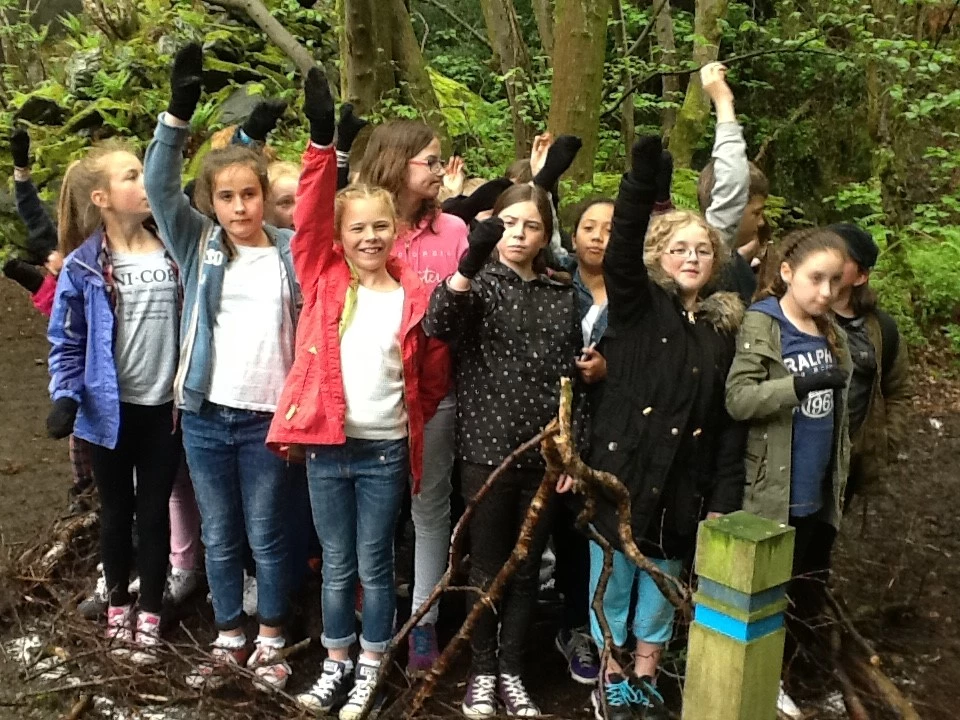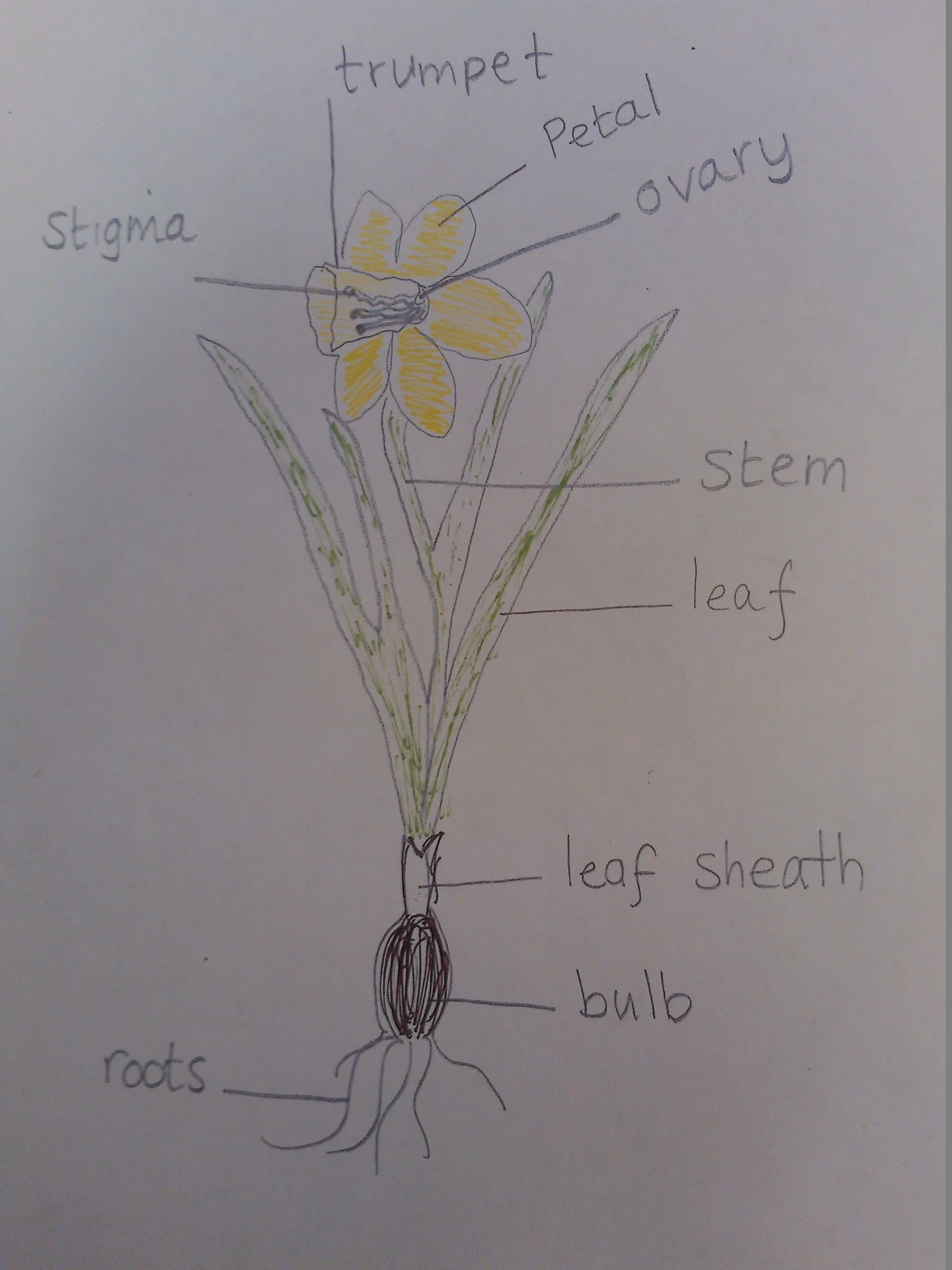Nature Trip for Spring Bulb Project Winners 2015
, 6 July 2015
St Brigid’s primary in Denbighshire won a trip to The National Slate Museum in Llanberis and a day of nature based activities as their prize for participating in the Spring Bulbs in schools project 2014-15. St Brigid’s year 6 class worked very hard on the project this year, taking daily weather readings and sending these in weekly to the Amgueddfa Cymru - National Museum Wales website. Each pupil cared for their plants and entered their individual flowering dates and heights to the website.
It was very hard to choose winners this year, as many schools had complete or near complete weather records. To make the decision fair the top schools were entered into a hat and a winner picked out at random for Wales, England and Scotland. Those that were not picked out became the ‘runners up’ who each received £40 gift vouchers to spend on gardening resources for their schools. The ‘highly commended’ schools received meadow resource packs, meadow seeds and sunflower seeds. The ‘special recognition’ schools received meadow resource packs and meadow seeds. All schools who entered data were awarded Super Scientist certificates and pencils in recognition of the fantastic work they have done for National Museum Wales through taking part in the investigation.
St Brigid’s visited Llanberis on 22 May, where they were greeted by Dafydd Roberts the Museum’s Keeper and myself, the Spring Bulbs Project Co-ordinator. We began by discussing the project results for 2014-15 and comparing these to previous years. You can study the report summary 2005-2015 for yourself here.
Next, we were escorted to the Quarrymen’s Cottages at Fron Haul and given a fascinating overview by Wyn Lloyd-Hughes of how life for the inhabitants would have changed over the course of 100 years. This was a fantastic way of bringing the stories and lives of the families associated with the local slate industry alive and the group enjoyed exploring the houses and discussing differences in décor and possessions between 1861, 1901 and 1969.
Following Fron Haul, we rushed over to the yard for a short introductory film about the history of the North Wales slate industry; ‘To Steal a Mountain’. This was very atmospheric, with the class falling silent as the lights dimmed and gasping at dramatic (or loud) intervals in the film. This was followed by a slate splitting demonstration by Carwyn Price, who split and dressed slate in front of the group. We watched as he split slate tiles and dressed slate into the shape of a heart. He showed us other examples of art that could be created with these methods, such as fans and love spoons. Carwyn offered the audience a chance to try their hand at slate splitting and the class nominated their teacher Mr Madog! He did a great job and was cheered throughout by the class.
Next, Peredur Hughes took us for a tour of the Museum’s working water wheel and explained the process that turned it and how this power was harnessed to operated machines in the Gilfach Ddu workshops. This is the largest water wheel on the British mainland with a diameter of 15.4 meters, and was used between 1870 and 1925 when it was replaced by a Pelton wheel. Standing under the wheel as it sprays water, gently groans and continually turns is quite an experience, especially when you begin to comprehend the engineering skills needed to design and build it. As part of the Spring Bulbs project schools are provided with resources to aid discussions around climate change and different energy sources - seeing a massive water wheel in motion added a level of understanding to these investigations.
A quick break for lunch and we were off up to the quarry for our nature activities. To begin with we discussed the smells, textures, sounds and sights of the woodland. We then went on a mini-beast hunt which led to discussions on how to classify different species and the different habitats our mini-beasts favoured. After making our own ‘perfumes of the forest’, finding out how many legs a woodlice has and that boys are just as squeamish as girls – we moved on to our next activity and built a nest! The group were very enthusiastic, as you can tell from the pictures and the size of the branches/ trees they managed to move with their makeshift beaks (I think there may have been a little cheating here!). It was a fantastic photo opportunity and great fun.
Peredur met us at the Vivian Quarry and gave us an insight into it’s history, including a closer look at the cliffs of slate and an insight into how the Quarrymen worked and interpreted the face of the Quarry. He discussed the rock man’s terms used to differentiate sections of slate, the geology behind their make-up, and how being able to tell a ‘trwyn’ from a ‘cefn crwn‘ helped Quarrymen interpret the slate, manipulate it to the results they wanted, and lessen the risk to their lives through making it possible to predict the results of their work. This was fascinating, the Vivian Quarry provided a beautiful setting, and it was a lovely way to end our day.
I thoroughly enjoyed meeting year 6 St Brigid’s and being able to thank them personally for their contribution to the Spring Bulbs in Schools project. It was a fantastic day, and I would like to thank the staff at the National Slate Museum for their hospitality and the time and effort they gave to make the trip such fun.
Applications are now open for schools in Wales to participate in the Spring Bulbs Project 2015-16. The winners will receive an action packed class trip full of nature activities to their closest Amgueddfa Cymru – National Museum Wales site.
Apply here!
Applications are now closed for schools in England and Scotland, but these schools can find information on next years project (2016-17) on the Edina Trust website.






